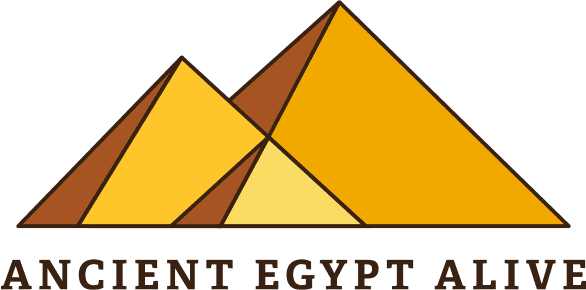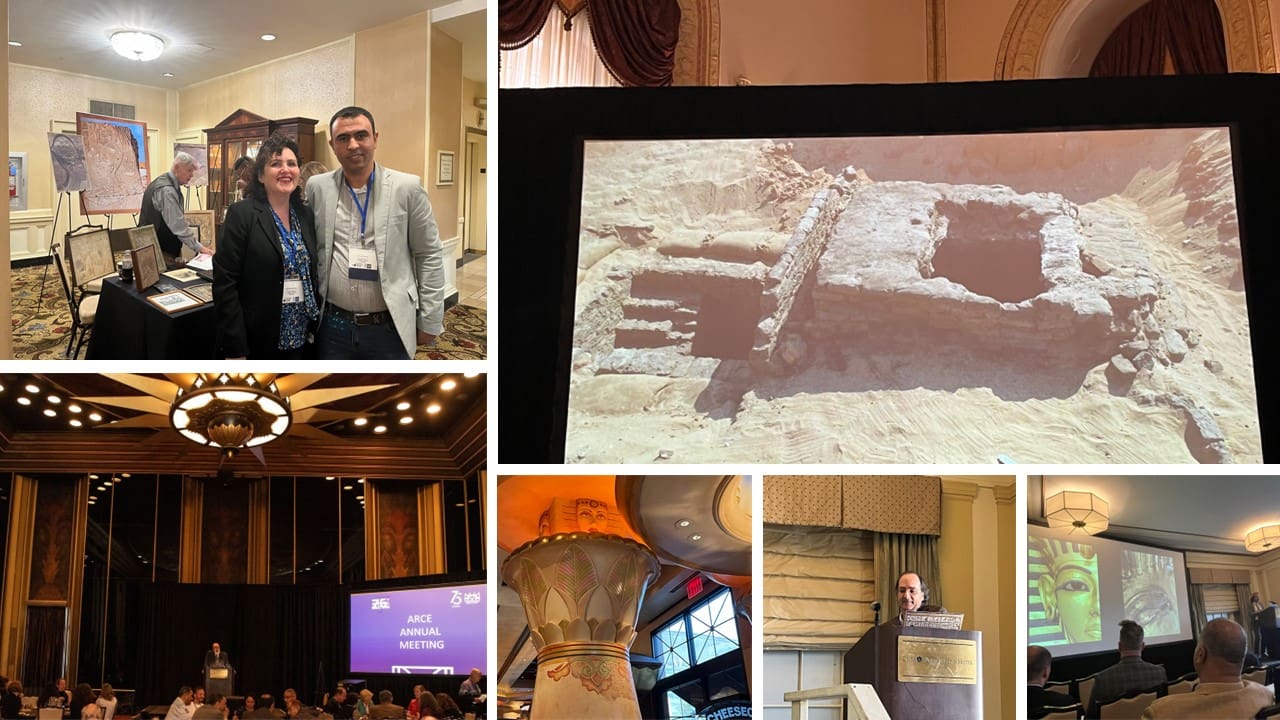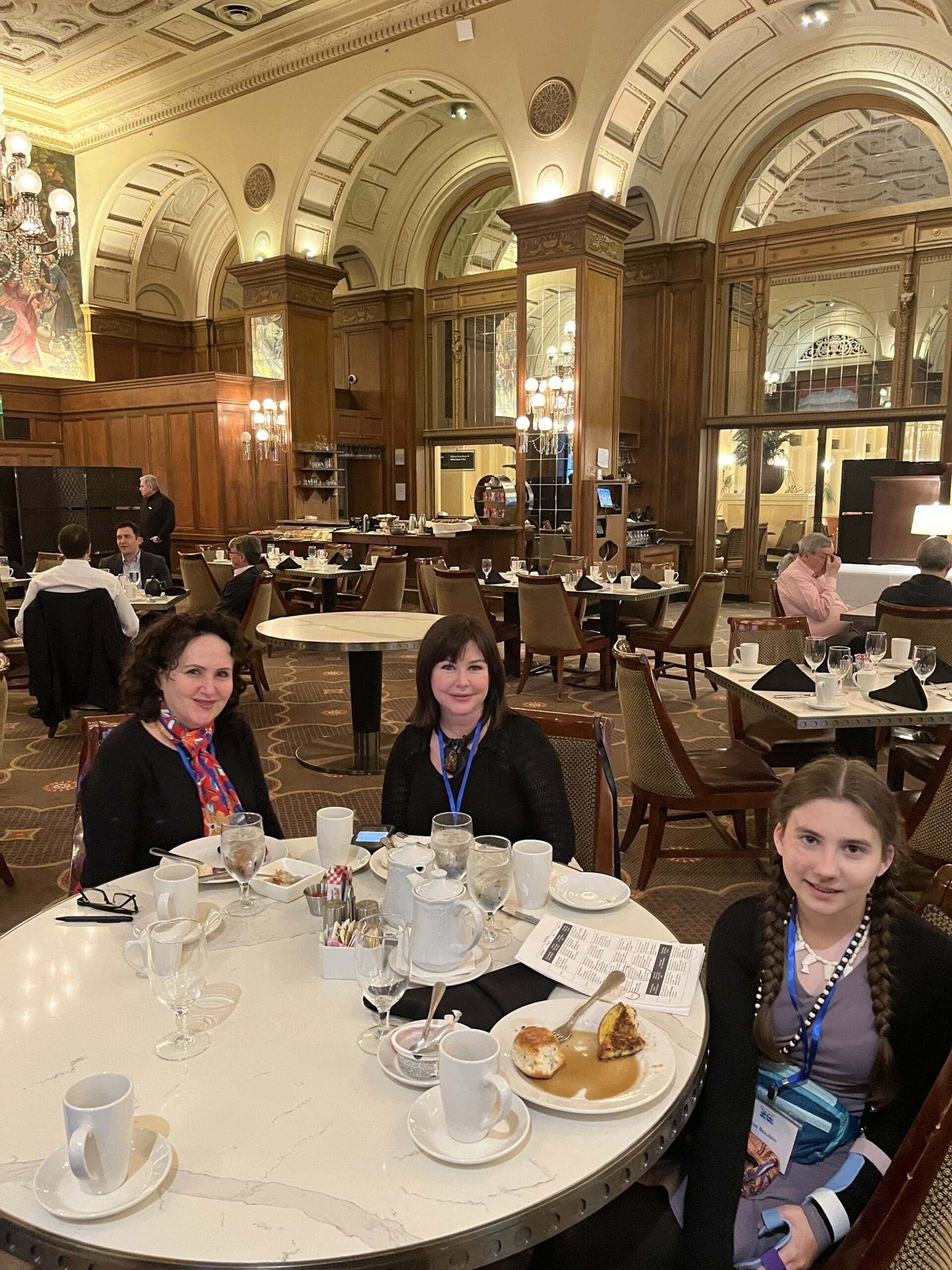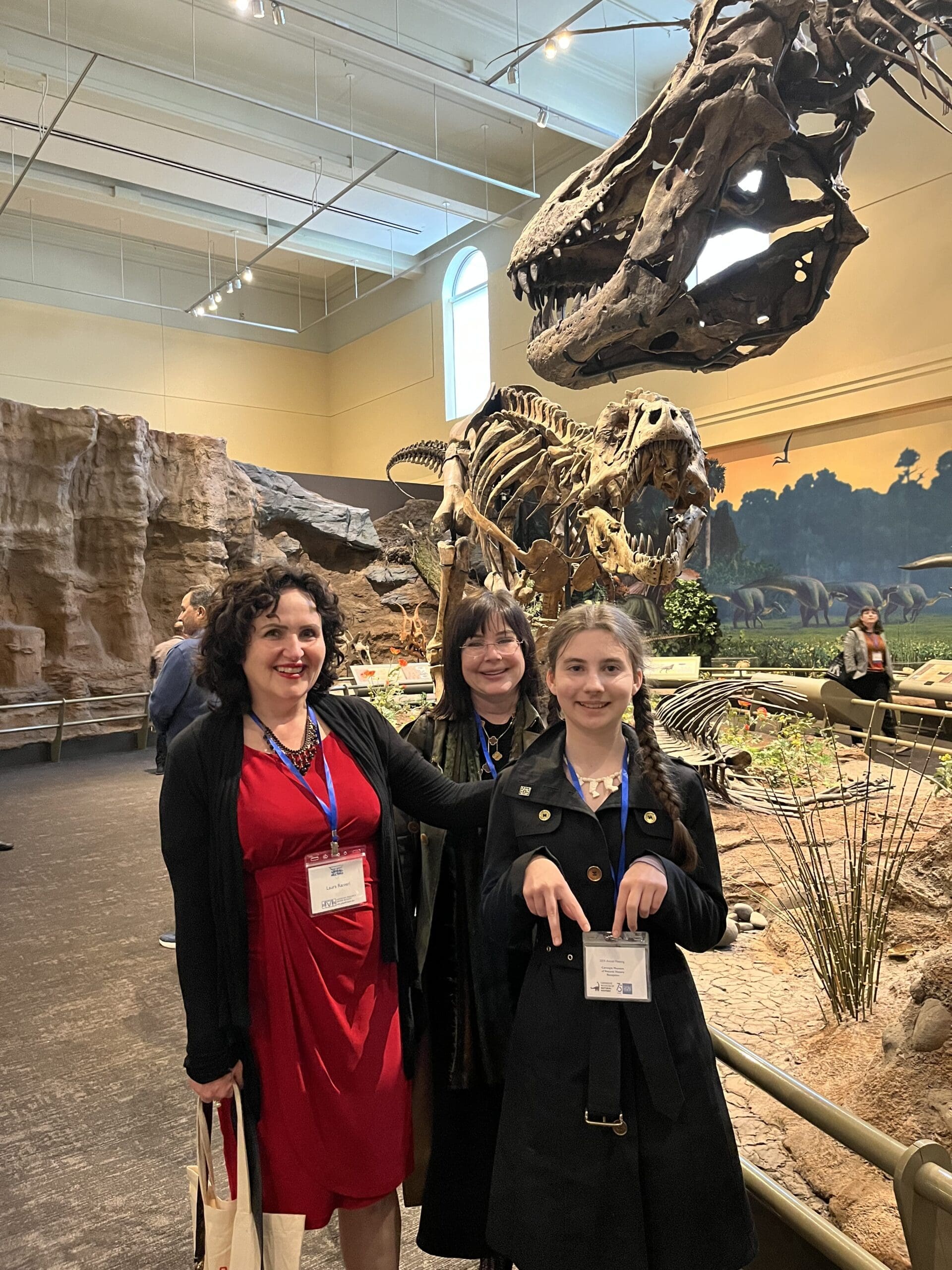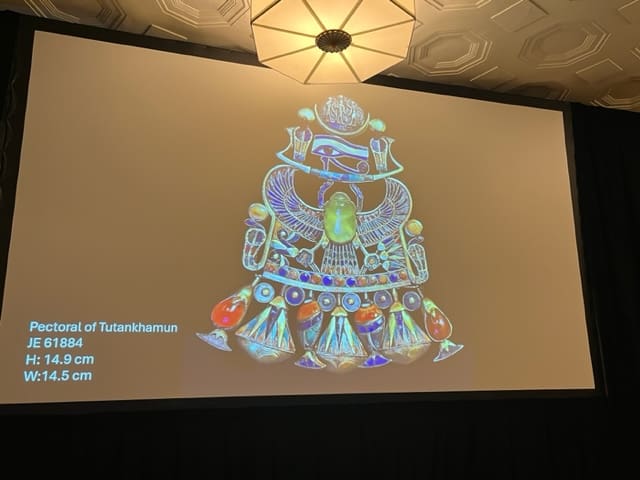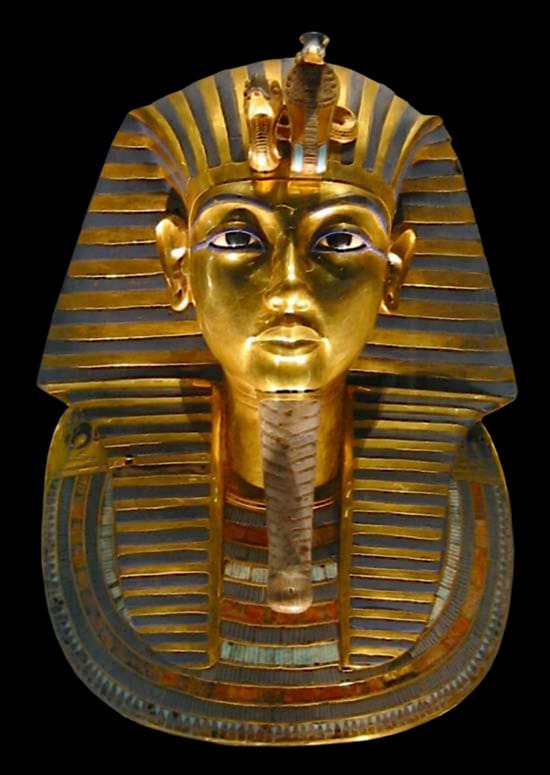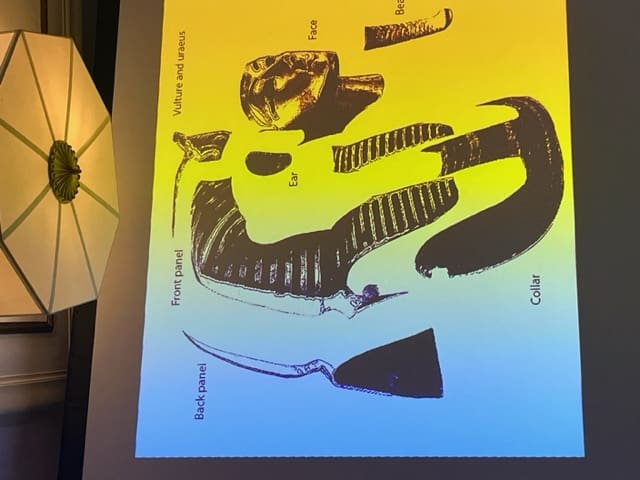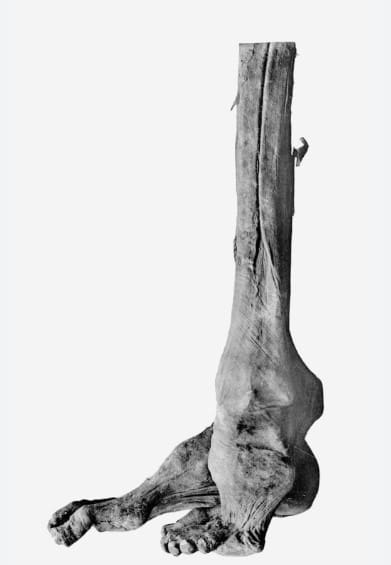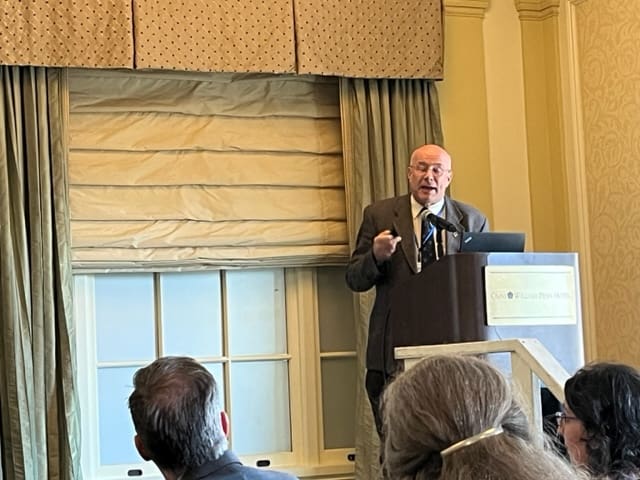Egyptologists Reveal New Secrets: Re-examinations and Remote Discoveries
By Laura Ranieri Roy
The American Research Centre in Egypt’s (ARCE) 73rd Annual Meeting April 19-21, 2024 brought together scholars and Egyptophiles from around the world. It took place in the beautiful Omni Penn century hotel in Pittsburg, Pennsylvania – a surprisingly nice town and elegantly classic hotel.
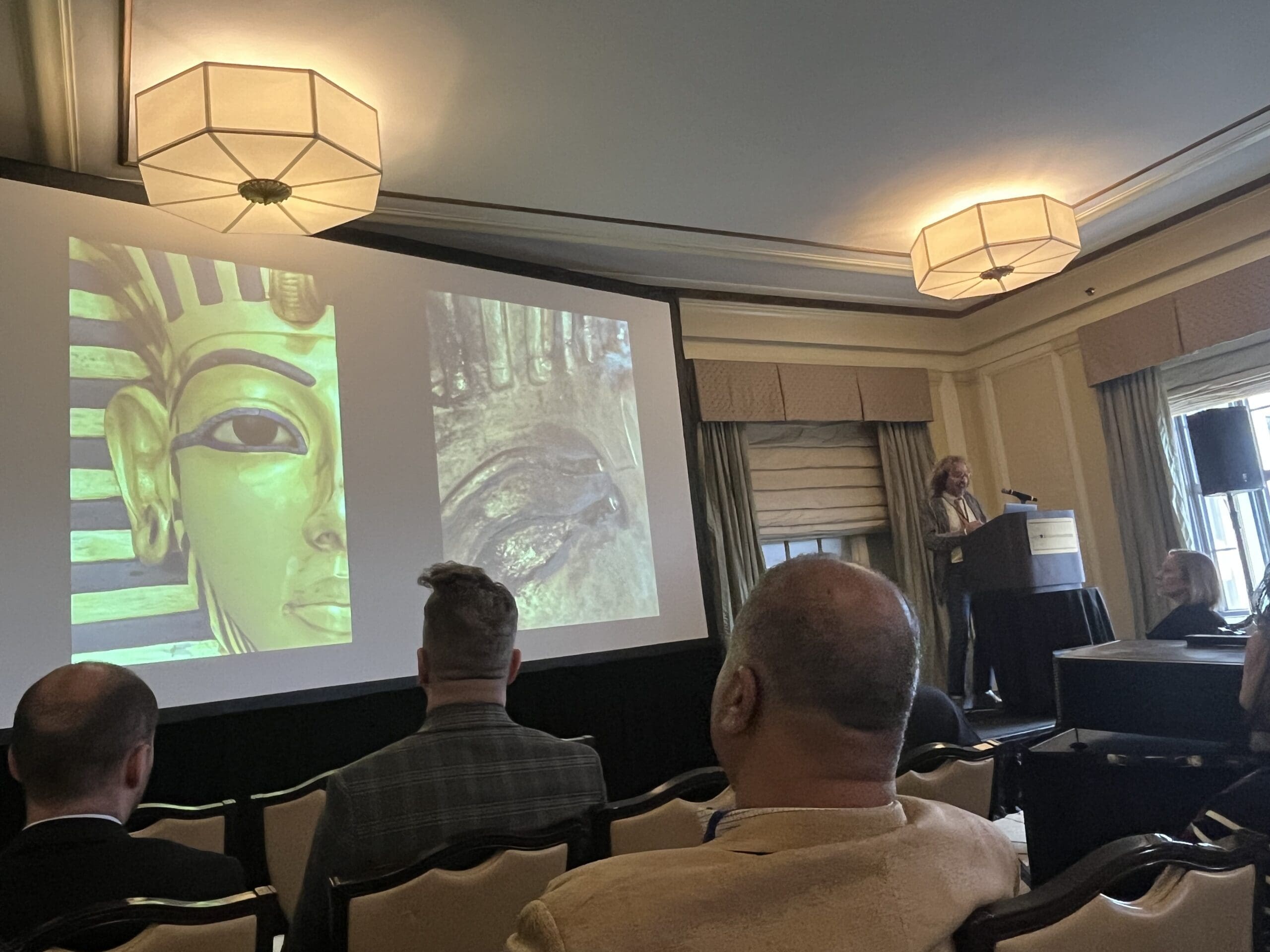
Tutankhamun Mask presentation with Tom Hardwick
Scores of Egyptologists, archaeologists and PHD students hobnobbed, reconnected – and presented talks on their special field of research and special “aha moments”. This year, no real glittering star keynotes (as there was in 2022 with Lord Carnarvon the 5th presenting) – yet some interesting presentations to be sure.
Carnegie Museum– lots of dinosaurs, little Egypt
It also featured an excursion to see the new Carnegie Museum of Natural History exhibit “The Stories We Keep: Conserving Objects From Ancient Egypt”. It was certainly interesting to tour this attractive natural history museum with its animal dioramas and impressive dinosaurs’ collection – but sadly with no keynote and mainly hands-on interactive displays and many Egyptian artifacts locked away, it was not a conference highlight. Evidently a larger Egypt collection will open in Pittsburgh soon. I guess we were too early.
 Carnegie stories we keep 1 2024
Carnegie stories we keep 1 2024
 Pittsburg Cheesecake Factory – Egyptian theme!
Pittsburg Cheesecake Factory – Egyptian theme!
Archaeology missions are busy, especially in remote regions!
So, what were some of the key takeaways from the dozen or more short presentations I attended over two and a half days? Certainly, the recent archaeology reports are particularly fascinating to give one a window into what is actually being discovered in recent years under the sands of Egypt. What was interesting is that the Egyptian inspectors and scholars that shared their site reports and progress were not all from the famous areas: Giza, Saqqara and West Bank Luxor: Many were working in Middle Egypt and the Delta – lesser traveled areas where wondrous things are being unearthed.
- The Step pyramid architectural form predates Saqqara! Unlocking the Mysteries of Early Dynastic Abydos: Yaser Mahmoud Hussein of Pisa University revealed 1st Dynasty tombs at the sacred site of Abydos with stepped superstructures – changing our understanding of when and where the Egyptians invented the pyramid form
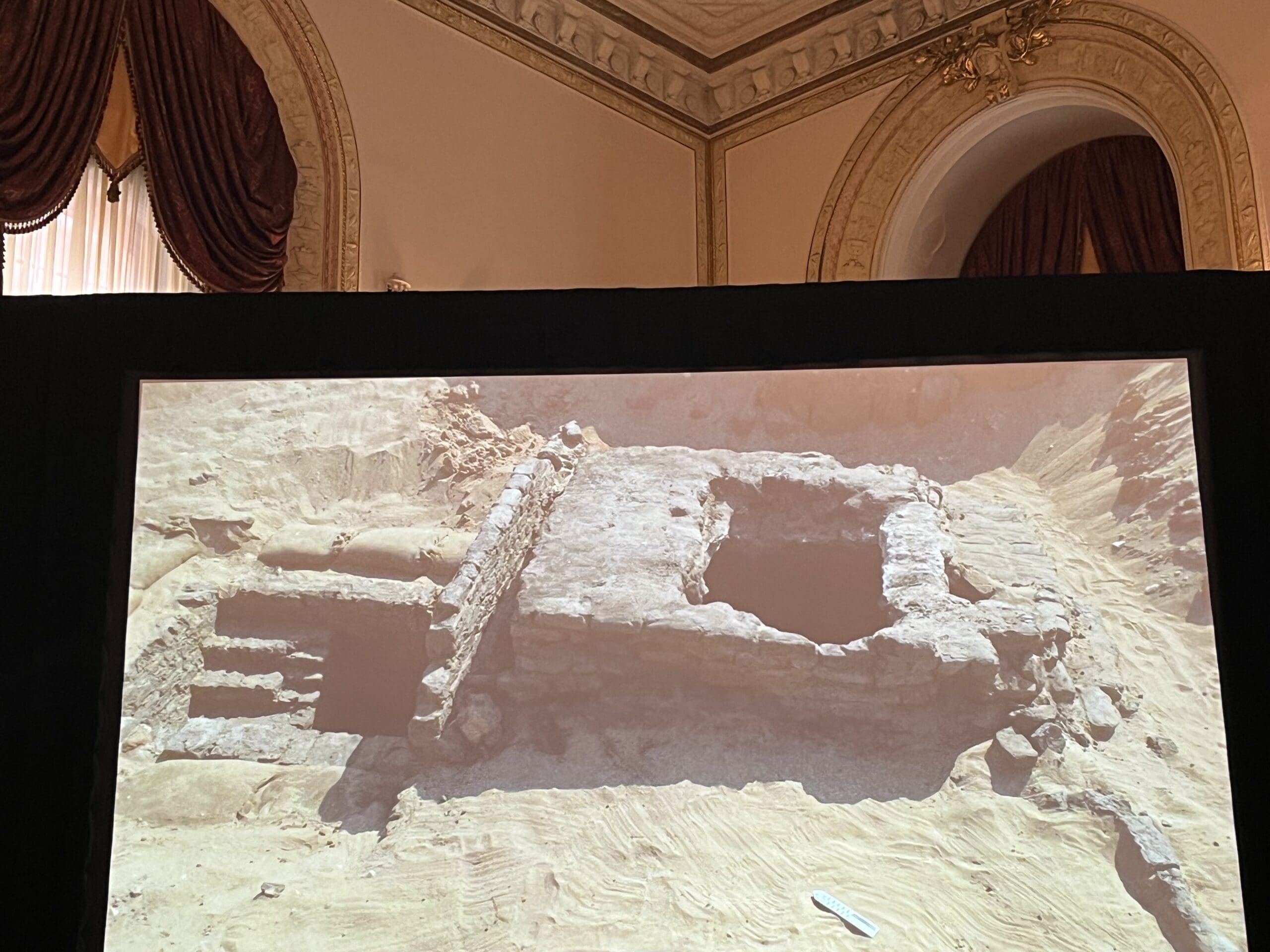 Stepped Pyramid Structures Abydos
Stepped Pyramid Structures Abydos
- Rock cut tombs unearthed in Middle Egypt: Inspector Ashraf Okasha, Director of the Sohag region (Middle Egypt) revealed a series of rock cut tombs in the mountains never investigated with texts and colourful scenes (butchery, offerings and marshes with occupation from 4th Dynasty through the late and Ptolemaic periods
- New Kingdom and Ptolemaic finds at Saqqara In the Saqqara remote North cemetery, Japanese archaeologist Dr. Nozomu Kawai is re-examining the area of the 1st and 2nd Dynasty tombs where Walter Emery worked in the 1950s. He is finding evidence of many 18th Dynasty & Ptolemaic burials – and expects more Old Kingdom finds too! Standout artifact discoveries include a beautiful Isis Aphrodite from the Ptolemaic era (pictured below)
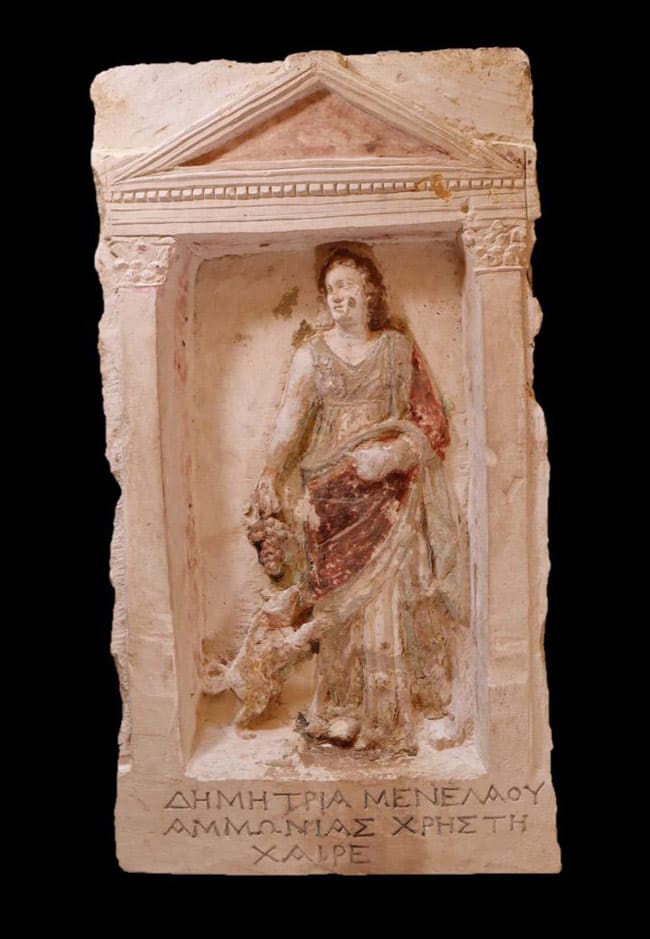 Saqqara Isis Aphrodite found by Japanese team
Saqqara Isis Aphrodite found by Japanese team
- A lost shrine to Seti I at Gebel el Silsila sandstone quarries north of Aswan is being investigated by a team led by Inspector Moaman Saad Mahmoud – possibly dating back to Hatshepsut’s time and shedding new light on sacred importance of this site. Celebrations for the flood happened here?
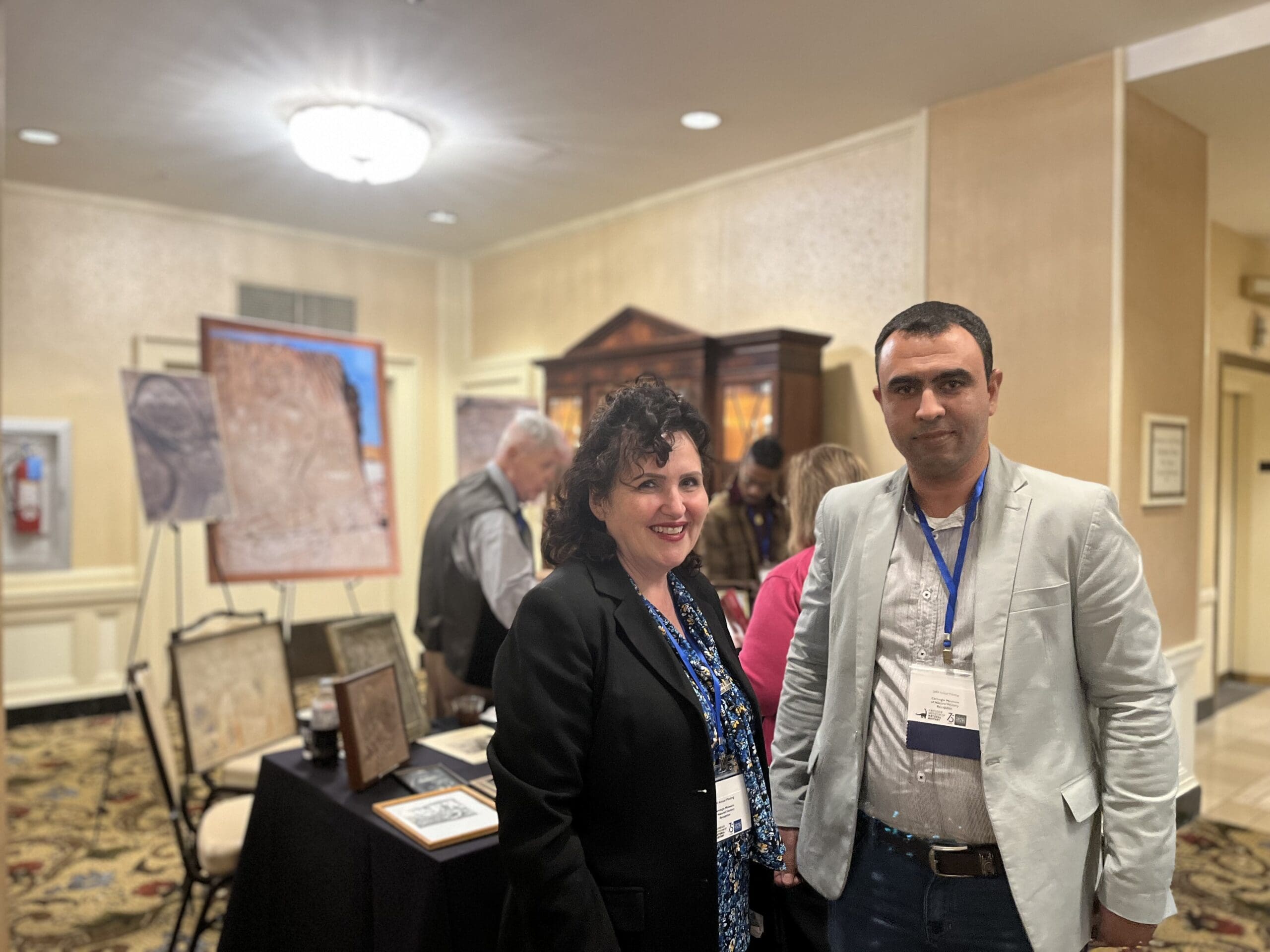 Prof Sayed Soloman, Basel University
Prof Sayed Soloman, Basel University
- One of the very first large, early Christian houses (Roman period 4th Dynasty) has been discovered in Dakhla Oasis (north west) – along with the earliest “crypts” in Egypt (Dr. Nicola Arevecchia and Roberta Cassagrande-Kim)
A second (or third) deeper look at well-known artifacts.
Other presentations that proved quite fascinating centred on a re-examination of famous artifacts, sites and finds – like Tutankhamun’s pectoral, a cosmetic jar of Amenhotep II – and Siptah’s foot! There was also a lot of history of archaeology presentations.
Here is a quick recap of some of four the most interesting presentations I personally attended.
Tutankhamun’s Mask was made for… HIM!
British Egyptologist Tom Hardwick entertained a jam-packed room presenting on the topic of Tutankhamun’s mask. (You can’t get a more glamorous subject). In recent decades, experts like Nicholas Reeves have suggested the famous mask was usurped – not made originally for the young king – perhaps for Nefertiti? Siting hands on recent hands-on scientific study of the mask by two German experts (Eckmann and Broschat) the view now is – it was made ENTIRELY for young Tut, no one else! It follows that work on this exquisite piece of gold and precious gems must have been started soon after the young boy took the throne
Tutankhamun Mask slide
Amenhotep II – Yes, he put makeup on his horses
Dr. Betsy Bryan of John Hopkins University– another excellent speaker – looked at an overlooked cylindrical makeup case housed at Eton College dating to the reign of Amenhotep III and featuring a peculiar carved motif of three horses.
Amenhotep II horse
Tutankhamun Libyan Desert Glass Pectoral – a Divine Coronation/Hebsed scene?
Dr. Loralei Corcoran, University of Memphis “unpacked” some overlooked mysteries on another treasure of Tutankhamun, namely his beautiful pectoral that may contain strange “meteoric” material from the Libyan desert. She pointed out the many lunar connotations – and then focused in on the crowning scene of the King flanked by Re Horakhty (sun) and Thoth (moon). Could they be welcoming the king into a transfigured world? Is this a conflation of the ancient Hebsed ritual – when Tutankhamun was legitimized as a god running over the Egyptian state? A timely theme in a return to old conventions after the Amarna period.
Siptah’s foot: Not Polio!
- The famous Dr. Aidan Dodson presented a very brief, clear presentation on the remains of a sickly king, whose mummy resides in the National Museum of Egyptian Civilization. The king’s foot has been previously diagnosed as symptomatic of polio – the disease of the day in the early 20th century when it was discovered. Dr. Dodson postulated this was not polio – but cerebral palsy. One of the reasons for his speculation is that he himself has personally struggled with the disease through his life – and recognizes how it manifests. Various doctors in the audience speculated the foot may indicate a variety of other conditions too. Just not polio!
Siptah’s foot
New Tech for preservation and research: Khufu’s Boats and reexamining “Cold war spy” aerial photography to understand Egypt.
Two other talks worth mentioning included:
- Aerial photography reexamined: A restoration is under way not of bones or pottery but of extremely high res photography of Egypt taken by U2 spy planes from high altitudes in the early 1960s. These extremely detailed images gives a view of the landscape and features (Pyramids, temples, towns and geography and beyond) more than 50 years ago. A University of Toronto/Brown University endeavour that is being put online for researchers.
- The use of 3D printing in the reconstruction of Khufu’s second boat – likely one for use during life – a project now underway at the Grand Egyptian Museum. 300 pieces of wood – some in very weak condition – requires the help of new technology.
Talks and scholarly discoveries aside, the ARCE conference brings many other benefits and pleasures for scholars and enthusiasts alike. The convivial connecting opportunities, and meeting of minds, social activities – and certainly the wonderful books make it so worth the cost of attendance. And it is open every year to everyone who may be interested.
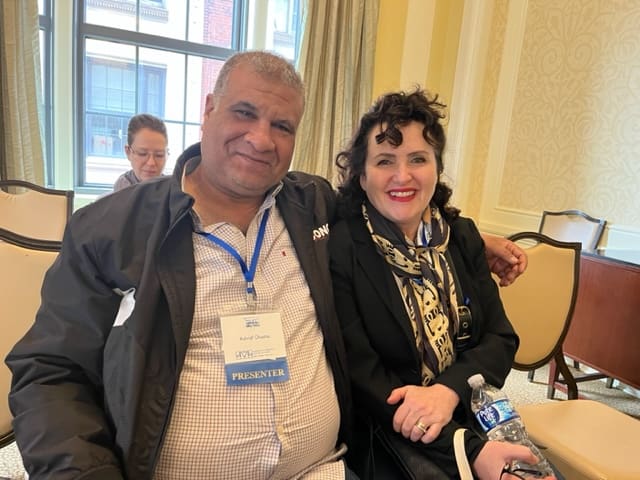 Inspector Ashraf Okasa – Director of Sohag – and me
Inspector Ashraf Okasa – Director of Sohag – and me
Next year’s event will be in San Francisco. I will surely be there.
